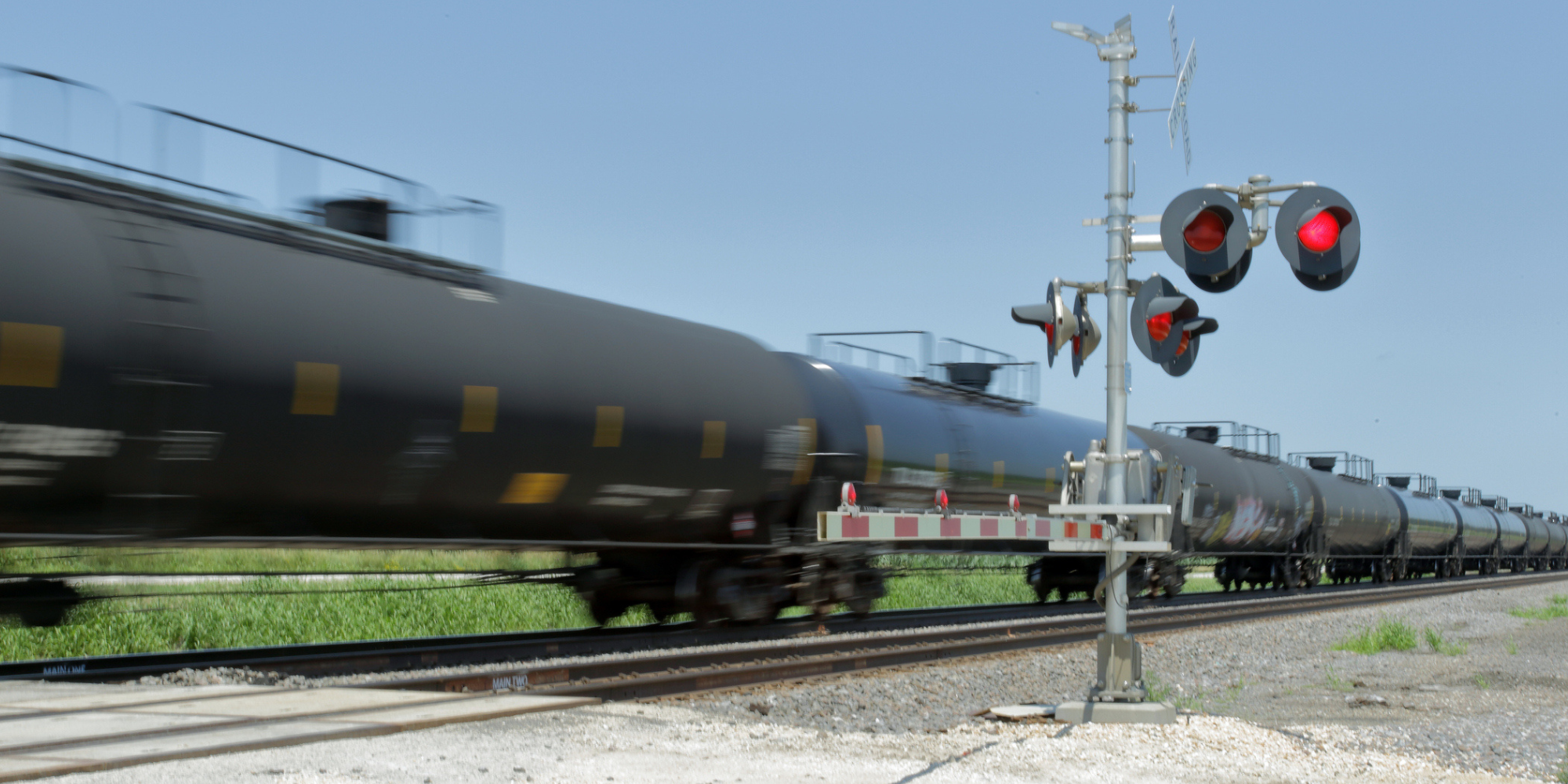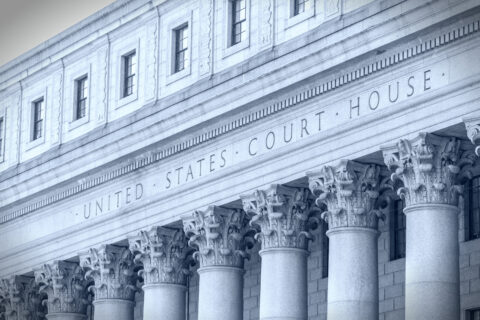On average, three trains derail in the U.S. every day. That’s over 1,100 derailments in the U.S. per year, and because railroads are putting much longer trains together, each train is now more likely to be carrying hazardous chemicals. Those chemicals can be disastrous to communities when they derail like the recent derailment in East Palestine, OH.
However, East Palestine is not alone. Since that derailment in early February 2023, a derailment and train fire forced the evacuation of the entire town of Raymond, Minnesota, trains in Washington spilled more that 5,000 gallons of diesel fuel in tribal areas narrowly missing contaminating the Puget Sound and trains full of beer and clay derailed into the picturesque waterway in Paradise, Montana.
Your City Cannot Fix Rail Safety Alone
While there are always steps for cities to prepare for emergencies, only Congress can truly change the safety rules for railroads. Because rail is an interstate commerce issue, the safety standards come down to Congress setting the rules.
If cities, towns and villages want to see rail safety changes, your first call should be to your Senators, urging them to take action to pass rail safety legislation. The Senate is currently considering S.576 – The Railway Safety Act of 2023. It is rare that Congress opens up rail legislation for safety updates, but the events in East Palestine, OH, reminded us that derailments are not simple disruptions, they can be devastating to entire towns and regions.
NLC supports rail safety legislation because it can address known factors involved in East Palestine’s derailment, but it also looks out at years of rail safety issues and how to make the whole rail system safer.
Read on for more action your community can take to prepare for a derailment.
Review Your First Responders’ Plan
Any derailment that occurs in a city, town, or village will be met by local first responders before state or federal responders can be deployed. Local elected officials may engage their first responders to walk through their current plans as well as their needs and concerns about how to address a future derailment. Your city could do this review as a detailed table-top review of a worst-case scenario with hazardous materials like East Palestine or as a briefing to your City Council.
The response would start with the Ames Fire Department as the primary hazmat response and the Iowa State Police Department ensuring the safety of people in the area. They would be checking the rail content manifest for hazardous materials as well as the wind direction before using the alert systems in place for university and the county to direct whether to shelter in place or evacuate. Depending on where the train derails, certain roads and pedestrian walkways would be closed, and command units on both sides of the tracks would be set up. After life safety concerns, the next issue is working on possible released toxins and any structural damage near the tracks. Depending on the situation, evacuations, shelters and mental health resources may need to be available. After the Ames derailment, it took 8-10 weeks to complete scrapping and removing the full train so the clean-up phases may vary based on the incident. As they improve on their plans, one additional step they are looking into is using first responder drones to arrive on the scene sooner to visually assess the situation before sending in first responders.
Once needs and concerns are heard from first responders and other stakeholders, local leaders may consider updating local emergency preparedness plans. The U.S. Federal Rail Administration has a guide for Recommended Emergency Preparedness Guideline for Rail Transit Systems which covers emergency plan development, training, facilities and equipment and vehicles. Local officials can check how their own plans compare to these federal recommendations. They may also consider looking at other neighboring jurisdictions or state emergency response plans. Some states like Vermont for example offer generic train derailment incident plans, and states like Ohio offer grants to local governments to update their emergency management plans. Fire departments can also apply for FEMA Assistance to Firefighters Grants for operations and safety improvements.
Additionally, consider if major institutions along railways in your community should have their own rail emergency plans such as schools, colleges, senior centers or hospitals, or major job centers. The Federal Emergency Management Administration offers many resources for emergencies, but they also have a specific guide for schools and colleges, the Hazardous Materials and Train Derailment Emergency Planning Guide for School Districts and Community Colleges.
Understand Your City’s Derailment Risk
More than half of all recent derailments occurred in 9 states: Texas, Georgia, Illinois, Ohio, Alabama, California, Tennessee, Pennsylvania, and Washington, but there are 160,000 miles of tracks in the U.S. Some tracks are used actively while others are more seasonal. The U.S. Department of Transportation has a map here to see the railways near you. While one railroad owns a segment of track, many railroads may operate on it so your city should have a full list of all the railroads and contacts as part of your emergency first response plan as well as your state emergency coordination contacts.
Use the Federal Railroad Administration safety data to see how many derailments are in your state here.
Talk to your State’s Department of Transportation’s lead on rail about the recent incidents and how to best work with them on infrastructure investment in rail and crossings. Perhaps most important to local governments, understand how many rail crossings where rail tracks and roads meet have had incidents using this county level data. Use the data to understand what risks are common in your area, and if your city should consider infrastructure upgrades at crossings. Several federal grants exist to help local governments with planning and building these projects.
Put Tools and Training to Work
Finally, to fully understand your derailment risk, a city needs to know what hazardous materials are often on the trains coming through your community. Due to the security risks around moving hazardous materials, this information requires authorization to access, but it is available to local governments and first responders who can then be trained specifically to respond to hazardous chemical fires.
Local first responders can apply to use the “AskRail” phone app to provide better information as they arrive on the scene of a rail incident. The AskRail app, launched in 2014, is a collaborative effort among the emergency response community and all North American Class I railroads. The app provides more than 25,000 first responders — from all 50 states and eight Canadian provinces — with immediate access to accurate, timely data about what type of hazardous materials a railcar is carrying so they can make an informed decision about how to respond to a rail emergency.
While this tool may be getting an upgrade soon, today it is the best essential tool available for a city emergency responder to have access to train content information in addition to having state emergency contacts saved in their phone. AskRail is also available to your emergency dispatch center upon request.
Additionally, first responders are also able to receive hazardous materials response training at the Security & Emergency Response Center (SERTC). SERTC trains railroad officials and first responders to safely handle accidents involving tank cars carrying hazardous materials. Their program offers extensive, immersive, realistic training that includes full-scale scenarios to help responders be better prepared for surface transportation emergencies. Find out more about 2023 training here.
Engage with NLC on Rail Issues
NLC’s Transportation and Infrastructure Services Committee organizes NLC’s policy on rail, and NLC members interested in actively engaging in our strategy on rail should consider joining.
Additionally, at NLC’s two major conferences – Congressional City Conference in March and City Summit in November – we have started hosting a Rail Roundtable with railroad partners like the Class I Railroads (BNSF, CSX, Norfolk Southern, Union Pacific, Canadian National, Canadian Pacific), Amtrak, and the Federal Railroad Administration. The Rail Roundtable is a collaboration meeting where issues of importance to cities and rail entities are discussed, and in conjunction with the meeting, cities can request individual meetings with railroads representative to discuss local concerns and projects for collaboration such as federal Railroad Crossing Elimination grants.
Also, NLC will soon be hosting a Local Infrastructure Bootcamp focused on rail federal grants.
Learn More
Senate Commerce Committee Chair Maria Cantwell (WA), Senator Sherrod Brown (OH) and Senator J.D. Vance (OH) joined local leaders for an update on what Congress is doing to raise the safety standards for rail and how communities of all sizes across the country should be weighing in with their Senators.









